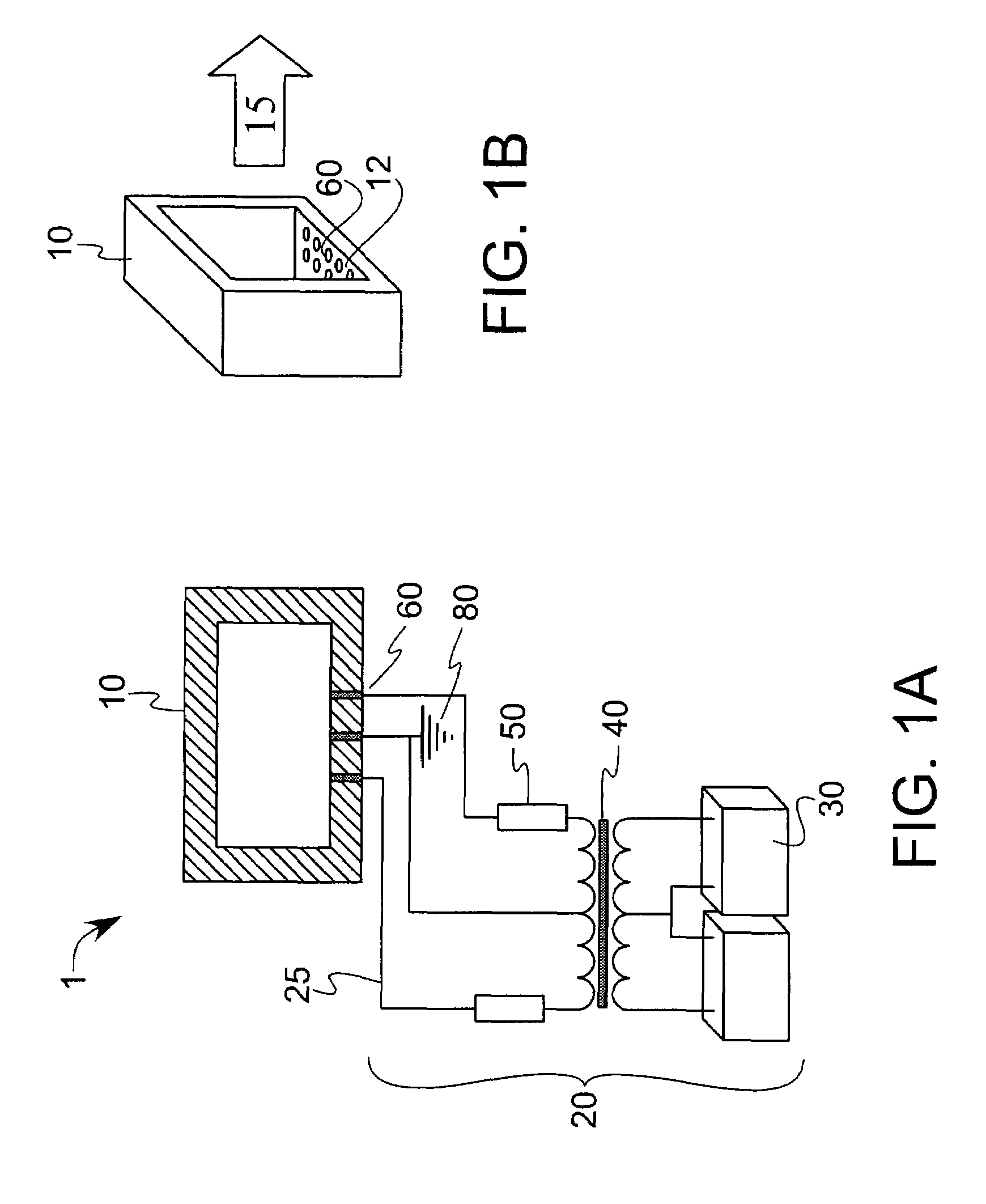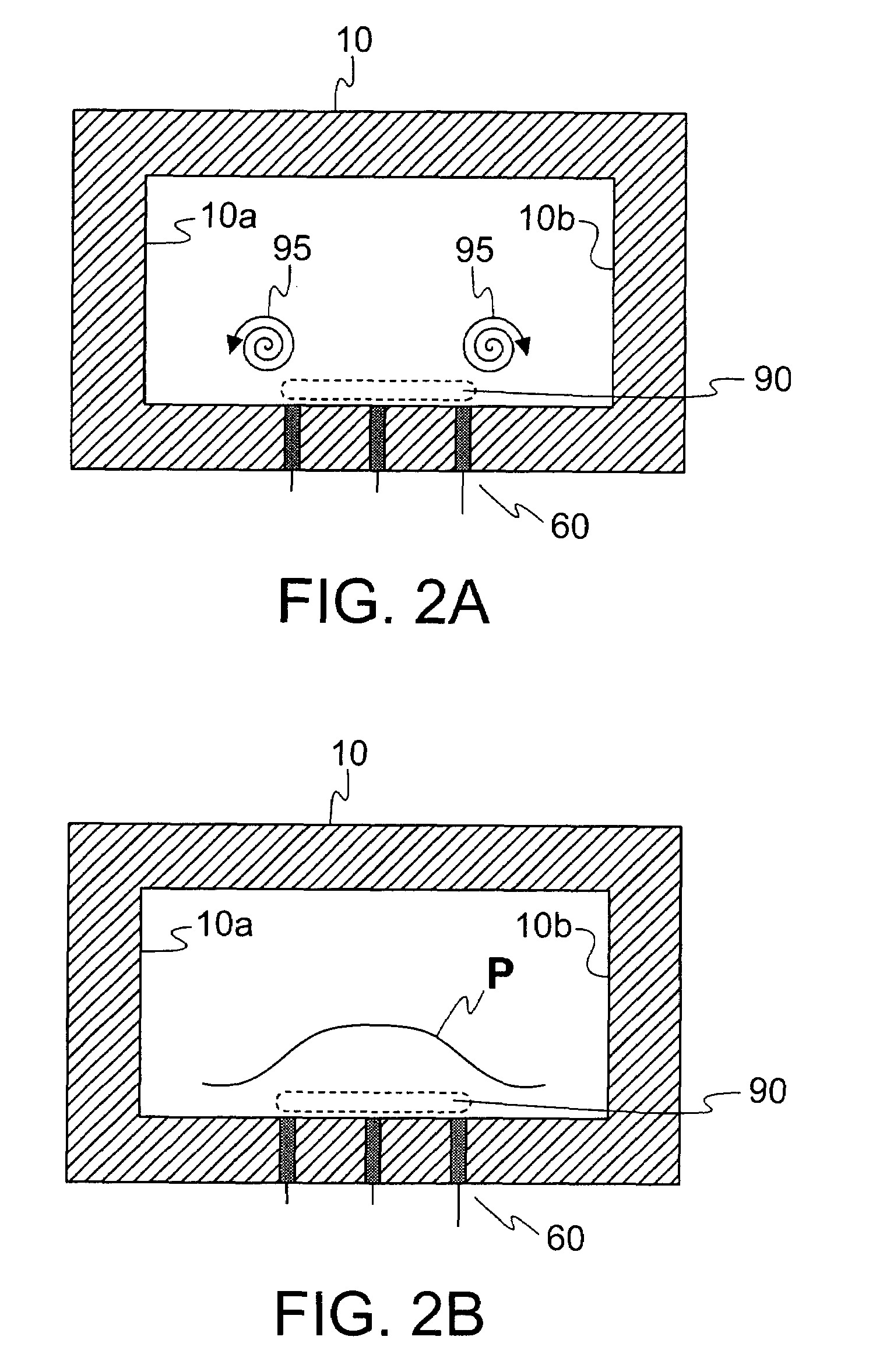Localized arc filament plasma actuators for noise mitigation and mixing enhancement
a plasma actuator and arc filament technology, applied in vessel construction, marine propulsion, aircraft navigation control, etc., can solve the problems of large bypass ratio engines that are not practical, large bypass ratio engines are not viable options, thrust losses, etc., to enhance or weaken such spanwise vorticity, high bandwidth, and high amplitude
- Summary
- Abstract
- Description
- Claims
- Application Information
AI Technical Summary
Benefits of technology
Problems solved by technology
Method used
Image
Examples
Embodiment Construction
[0040]Referring first to FIGS. 1A and 1B, a schematic of a localized arc filament flow control system 1 is shown. The system 1 includes a conduit (shown in the form of a rectangular exhaust nozzle extension 10) configured as a fluid flowpath 15, and an arc generator 20. The system 1 includes copper or steel pin electrodes 60 shown embedded into the flowpath surface 12 of exhaust nozzle 10. Electrodes 60 are substantially flush mounted into surface 12 in order to avoid protruding into the flowpath 15. In one embodiment, each electrode 60 is two millimeters in diameter, connected to arc generator 20 through appropriate wiring 25. In a preferred form, each pair of electrodes that are used together to complete a circuit cooperate as an actuator. The actuator can be placed in numerous locations within the exhaust nozzle 10, thus permitting tailoring of the position of the generated arc filament plasma. Additional equipment making up the arc generator 20 include amplifiers 30, transformer...
PUM
 Login to View More
Login to View More Abstract
Description
Claims
Application Information
 Login to View More
Login to View More - R&D
- Intellectual Property
- Life Sciences
- Materials
- Tech Scout
- Unparalleled Data Quality
- Higher Quality Content
- 60% Fewer Hallucinations
Browse by: Latest US Patents, China's latest patents, Technical Efficacy Thesaurus, Application Domain, Technology Topic, Popular Technical Reports.
© 2025 PatSnap. All rights reserved.Legal|Privacy policy|Modern Slavery Act Transparency Statement|Sitemap|About US| Contact US: help@patsnap.com



